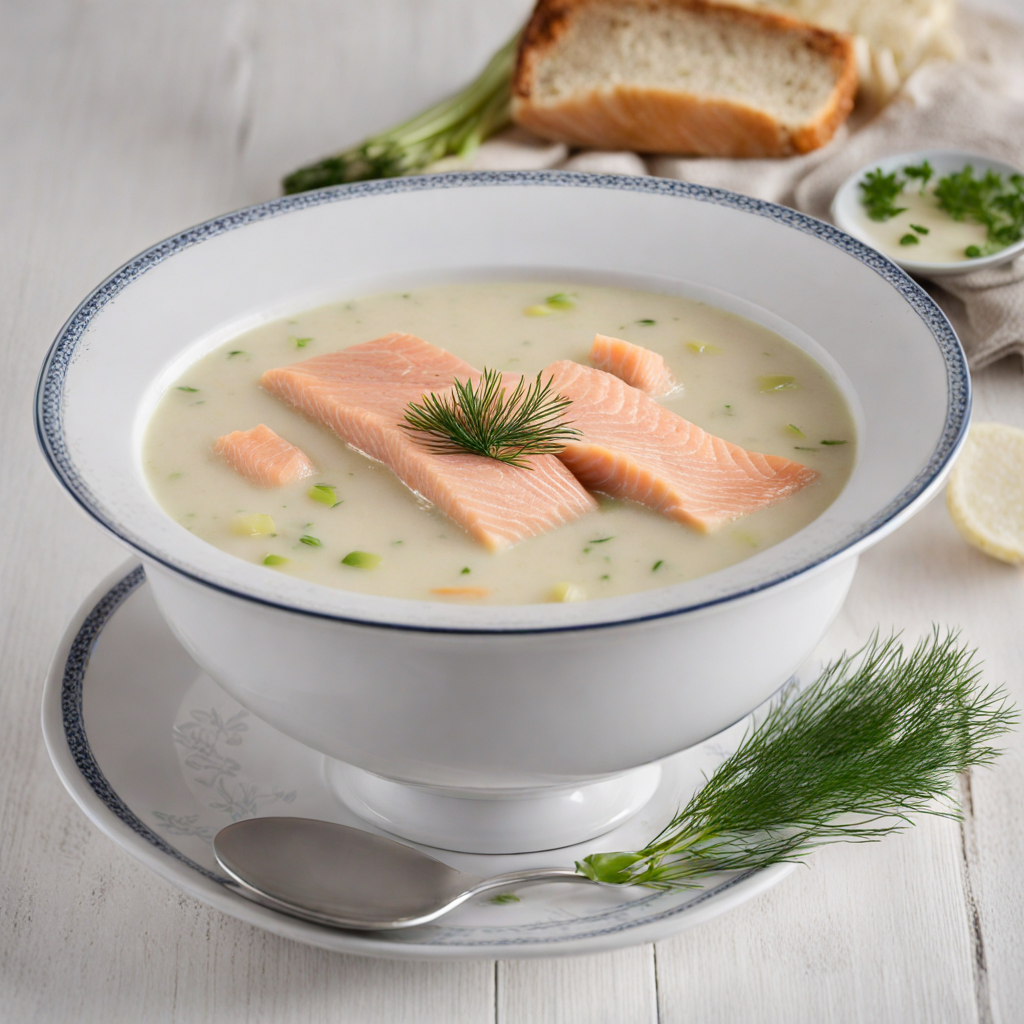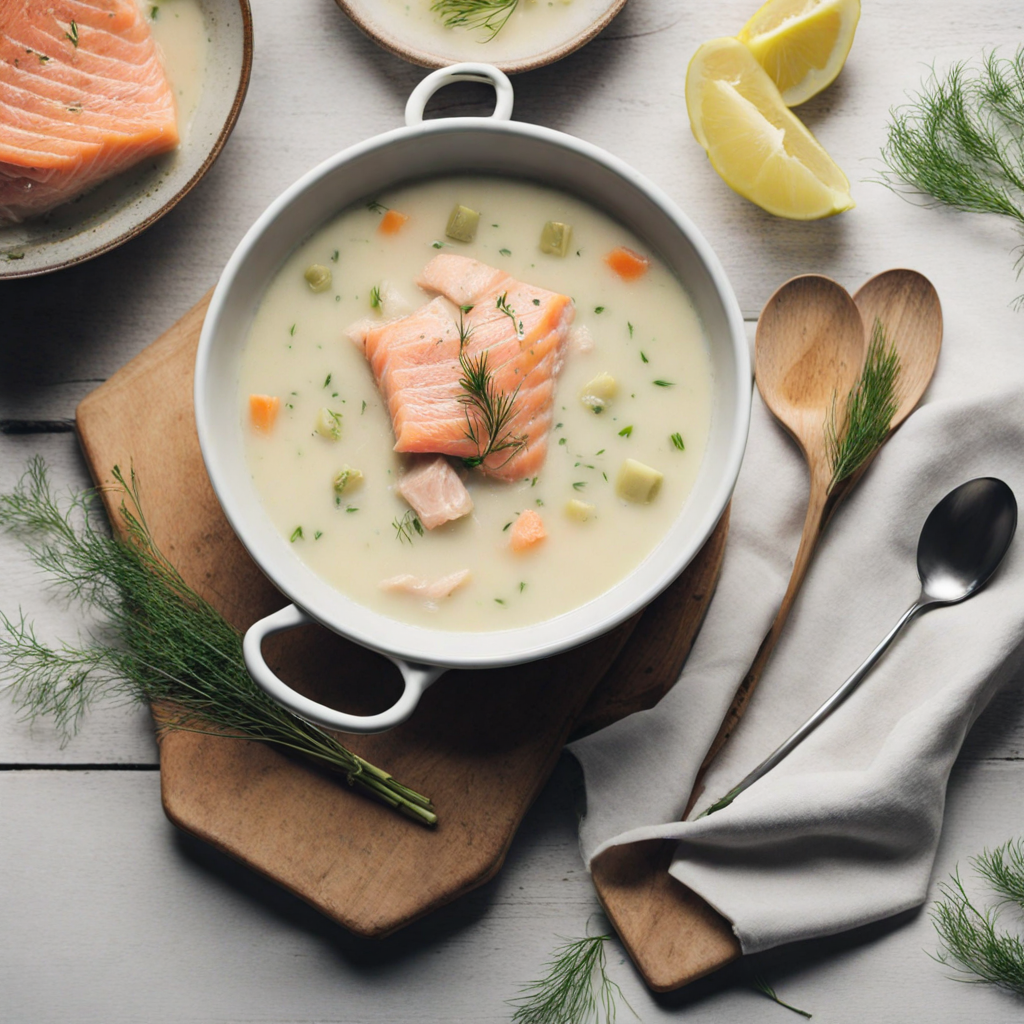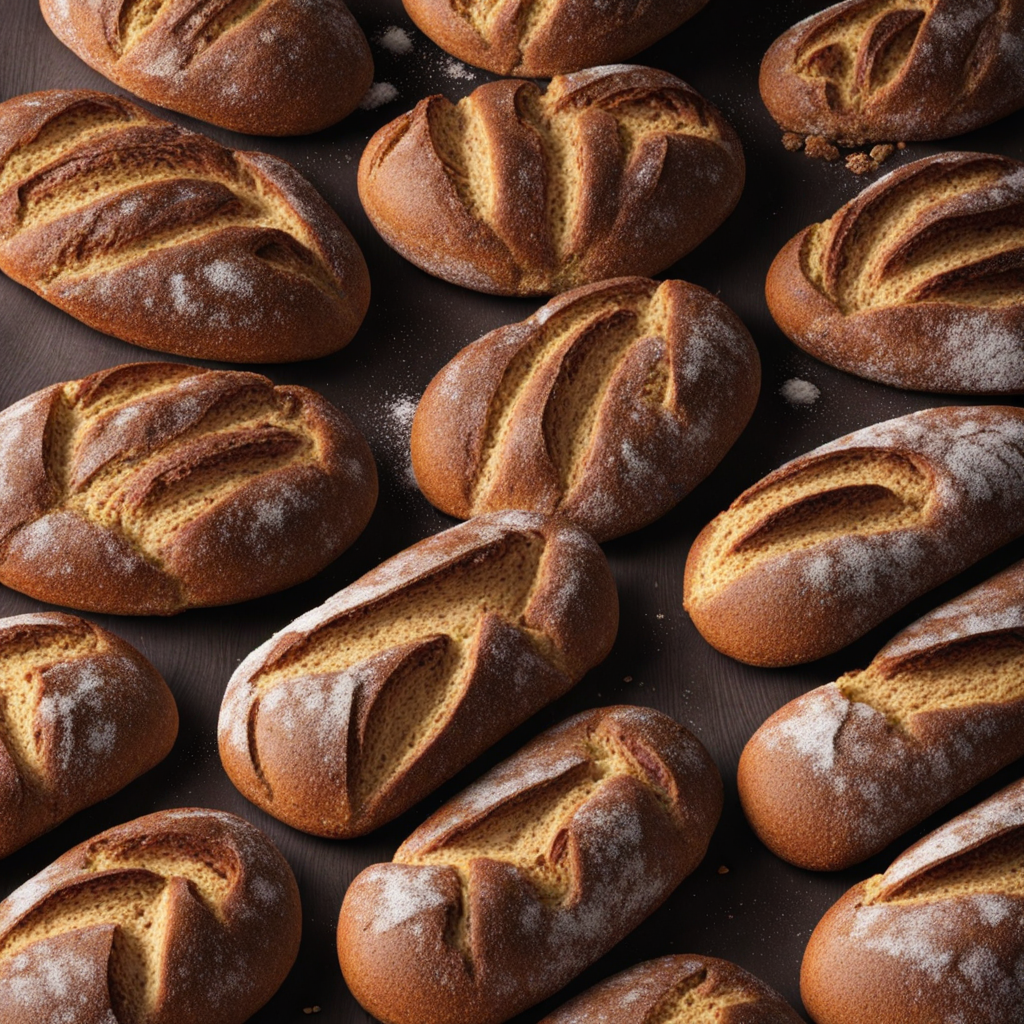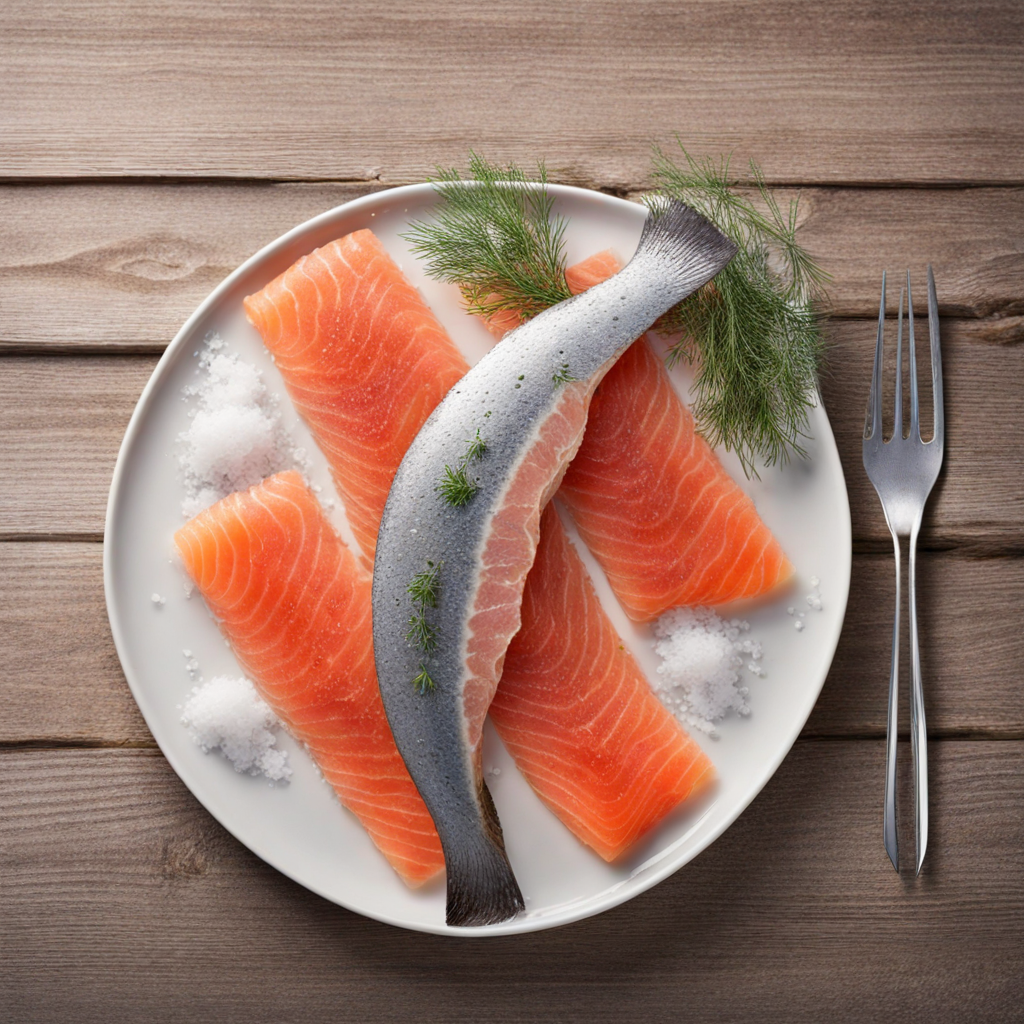Finnish Salmon Soup
Finnish Salmon Soup, known as Lohikeitto, is a delightful and comforting dish that embodies the essence of Finnish cuisine. This creamy soup is primarily made with fresh salmon, which is typically sourced from the pristine waters of Finland, ensuring a rich and flavorful experience. The salmon is complemented by tender potatoes, which add heartiness to the dish, and fresh dill, which imparts a fragrant herbal note that elevates the overall flavor profile. The base of the soup is a luscious blend of fish stock and cream, creating a smooth and velvety texture that envelops every ingredient in a comforting embrace. In addition to the core ingredients, Finnish Salmon Soup often features leeks, carrots, and onions, which contribute layers of sweetness and depth to the dish. The vegetables are simmered until tender, allowing their flavors to meld beautifully with the salmon and the creamy broth. The use of fresh herbs like dill and parsley not only enhances the taste but also adds a vibrant green touch that is visually appealing. Each spoonful is a harmonious blend of rich, savory, and slightly sweet flavors, making it a beloved staple in Finnish households. This soup is not just a meal; it’s a culinary experience that showcases the simplicity and purity of Finnish ingredients. Often enjoyed during the colder months, Lohikeitto serves as a warming comfort food that brings people together. Whether paired with crusty bread or enjoyed on its own, Finnish Salmon Soup invites you to savor the taste of Finland, with each bowl telling a story of tradition, nature, and the sea.
How It Became This Dish
Lohikeitto: A Journey Through Finland's Culinary Tradition Lohikeitto, or Finnish salmon soup, is more than just a dish; it is a vibrant representation of Finland's rich culinary heritage, a testament to the country’s close relationship with nature and its aquatic resources. This creamy, flavorful soup, often served with potatoes, carrots, leeks, and a sprinkling of fresh dill, reflects the simplicity and depth of Finnish cuisine, evolving over centuries while remaining deeply rooted in the country’s cultural identity. Origins of Lohikeitto The origins of Lohikeitto can be traced back to the rural communities of Finland, where fishing played a vital role in sustaining life. The vast and pristine lakes, rivers, and coastal waters of Finland have long been abundant with freshwater and saltwater fish, making fish a staple in the Finnish diet. Salmon, in particular, has a special place in Finnish culture, revered not only for its delicious taste but also for its nutritional value. Historical records suggest that the practice of fishing dates back to prehistoric times in Finland. The indigenous Sámi people, who inhabited the northern regions, relied heavily on fishing for sustenance, utilizing traditional methods that are still respected today. The importance of fish is also evident in Finnish folklore, where salmon features in various tales and legends, symbolizing abundance and prosperity. By the late 19th century, Lohikeitto began to emerge as a distinct dish. It was during this time that Finnish culinary traditions started to gain recognition, and the concept of a national cuisine began to take form. Lohikeitto became a staple in Finnish households, particularly in coastal areas where fresh salmon was readily available. The soup's ability to bring together simple, local ingredients made it an ideal meal for families, reflecting the Finnish principle of "sisu" — resilience and resourcefulness. Cultural Significance Lohikeitto holds a significant place in the hearts of Finns, often associated with gatherings, celebrations, and comforting home-cooked meals. It is a dish that transcends social classes, enjoyed by both the wealthy and the working class. In Finland, food is not just sustenance; it’s a way to connect with family and friends. Sharing a bowl of Lohikeitto often signifies warmth, hospitality, and community. The soup is traditionally prepared during festive occasions and family gatherings, especially during Midsummer celebrations (Juhannus) when families and friends come together to enjoy the long summer days. Lohikeitto is also a popular choice during the colder winter months, providing warmth and nourishment against the biting chill. The dish has become a symbol of comfort — a reminder of home and the culinary traditions passed down through generations. In addition to its role in family life, Lohikeitto is celebrated in Finnish cuisine on a broader scale. It is often featured in restaurants and culinary festivals across the country, showcasing the simplicity and freshness of Finnish ingredients. The dish has also gained international recognition, with chefs around the world incorporating it into their menus, further solidifying its place in the global culinary landscape. Development Over Time The evolution of Lohikeitto reflects broader changes in Finnish society, agriculture, and culinary practices. While the basic elements of the dish have remained consistent, variations have emerged that reflect regional preferences and modern influences. Traditional recipes typically include salmon, potatoes, leeks, carrots, and dill, simmered in a creamy broth. However, as culinary trends evolved, so too did the ingredients and techniques used in making Lohikeitto. In the early 20th century, as Finland underwent industrialization, the availability of ingredients expanded. Canned goods and processed foods began to filter into Finnish kitchens, leading to some adaptations of traditional recipes. While many families continued to prepare Lohikeitto with fresh fish and vegetables, the introduction of convenience foods influenced how the dish was made, with some opting for pre-packaged bases or frozen fish. The latter half of the 20th century saw a revival of interest in traditional and artisanal cooking, as people began to appreciate the value of locally sourced, seasonal ingredients. This movement coincided with a growing awareness of health and sustainability, leading many to return to the roots of Finnish cuisine. Lohikeitto experienced a renaissance during this time, with chefs and home cooks alike experimenting with new interpretations while honoring the traditional flavors. Today, Lohikeitto remains a beloved staple in Finnish homes and restaurants. Chefs are now experimenting with different types of fish, including trout and char, while also incorporating contemporary culinary techniques. Some modern versions may include elements such as smoked salmon or the addition of cream alternatives, catering to various dietary preferences. Nevertheless, the essence of Lohikeitto — its comforting, creamy broth and the taste of fresh fish — remains intact. Conclusion Lohikeitto is more than just a salmon soup; it is a culinary narrative that tells the story of Finland's natural bounty, cultural identity, and evolving food traditions. In every bowl of this comforting dish, one can taste the history of the Finnish people — their connection to the land and water, their sense of community, and their resilience in embracing change while honoring the past. As Finland continues to grow and change, Lohikeitto stands as a symbol of tradition and innovation. It invites both locals and visitors to partake in a shared experience, bridging generations and cultures through the universal language of food. Whether enjoyed on a summer evening by the lakeside or served as a warming dish during the winter months, Lohikeitto remains an enduring emblem of Finnish hospitality and an essential part of the nation’s culinary legacy.
You may like
Discover local flavors from Finland







